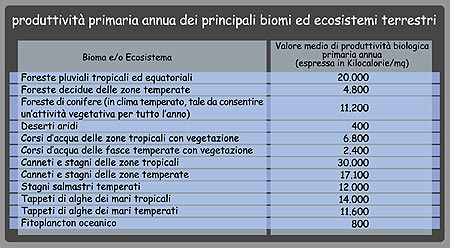Primary Wetland Produce
Wetland ecosystems shelter an extremely rich community of free-living, photosynthesising micro-organisms (green algae, blue bacteria, diatoms etc.) suspended in the water, which together make up the phytoplankton.
These organisms are the "producers", or in other words organisms which by chlorophyllian photosynthesis fix atmospheric carbon dioxide to produce new living material (biomass).
Phytoplankton is therefore the first step in the freshwater ecosystem food chain.
The dense and varied wetland plants increase further the photosynthesis process and consequently biomass production.
So it comes as no surprise that wetlands and ponds are generally considered the terrestrial ecosystem to have the highest annual primary biological productivity, i.e. the quantity of new biological material (biomass) produced in one year by the ecosystem through photosynthesis.




